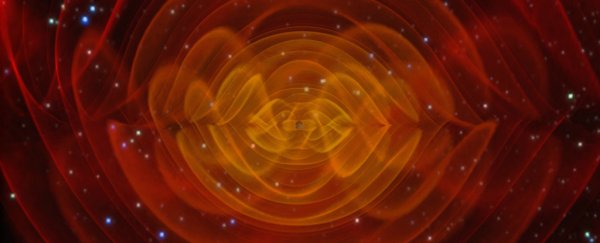It's been almost a year now since the Laser Interferometer Gravitational-Wave Observatory (LIGO) announced the greatest scientific discovery of 2016.
Though the first gravitational waves were actually detected in September 2015, it was only after additional detections were made in June 2016 that LIGO scientists finally confirmed that the elusive waves exist, solidifying Albert Einstein's major prediction in his theory of relativity.
Now, the most sensitive detector of spacetime ripples in the world turns out to also be the best producer of gravitational waves.
"When we optimise LIGO for detection, we also optimise it for emission [of gravitational waves]," said physicist Belinda Pang from the California Institute of Technology (Caltech) in Pasadena according to a report in Science.
Pang was speaking at a meeting of the American Physical Society last week, representing her team of physicists.
Gravitational waves are ripples that are produced when massive objects warp spacetime.
They essentially stretch out space, and according to Einstein, they can be produced by certain swirling configurations of mass. Using uber-sensitive twin detectors in Hanford, Washington, and Livingston, Louisiana, LIGO is able to detect this stretching of space.
Once they realised they could detect gravitational waves, the physicists posited that the sensitivity of their detectors would enable them to efficiently generate these ripples, too.
"The fundamental thing about a detector is that it couples to gravitational waves," said Fan Zhang, a physicist at Beijing Normal University.
"When you have coupling, it's going to go both ways."
The LIGO team tested their idea using a quantum mathematical model and found that they were right: their detectors did generate tiny, optimally efficient spacetime ripples.
Quantum mechanics says that small objects, such as electrons, can be in two places at once, and some physicists think that it's possible to coax macroscopic objects into a similar state of quantum motion.
According to Pang, LIGO and these waves could be just the things to make it happen.
Though that delicate state couldn't be sustained for very long periods, any amount of time could give us added insight into quantum mechanics.
We could measure how long it takes for decoherence to occur and see what role gravity might play in the existence of quantum states between macroscopic objects.
"It's an interesting idea, but experimentally it's very challenging," explained Caltech physicist Yiqui Ma, one of Pang's colleagues.
"It's unbelievably difficult, but if you want to do it, what we're saying is that LIGO is the best place to do it."
Any added insight into quantum activity could not only help us build better quantum computers, it could completely revolutionise our understanding of the physical universe.
LIGO is already in the process of receiving upgrades that will help it detect even fainter gravitational waves, and eventually, the plan is to build the Evolved Laser Interferometer Space Antenna (eLISA), a gravitational wave observatory in space.
Within the next decade, not only could LIGO be regularly detecting gravitational waves, it could also be finding ever more advanced ways to create them and furthering our understanding of the quantum world in unimaginable ways.
This article was originally published by Futurism. Read the original article.
